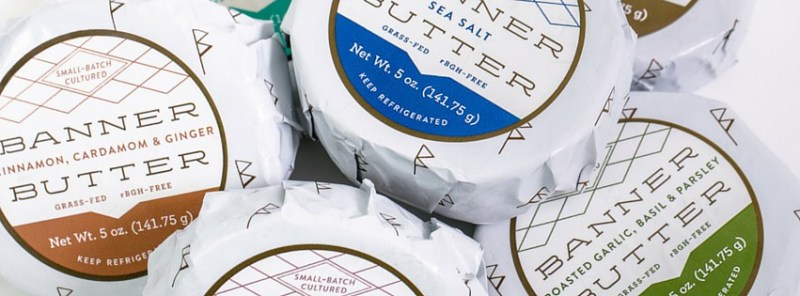
Related: Ode to Butter
They begin with fresh cream from local, grass-fed cows and let it ripen for many hours. This allows good bacteria to form. Once the cream is ready, they slowly churn it in small batches—a process that takes 20 times longer than industrial scale butters. The result: butters that are creamier and tastier than anything you thought possible.
The company produces about 800 pounds of the butter a week. They offer salted and unsalted varieties and flavor it with some interesting ingredients. Some of the compound butters they offer include a Roasted Garlic, Basil, Parsley butter, Cinnamon Cardamom Ginger, and Balsamic Fig and Caramelized Onion. Seasonals include Strawberry Mint butter in Spring, Peach butter in Summer, and Pumpkin Spice butter near Halloween.
Check out a recipe featuring their Sea Salt Banner Butter to accent Fresh Red Snapper. Perfect for a summer meal.
INGREDIENTS
2 fresh red snapper filets
3 tbsp. Sea Salt Banner Butter
1 lemon
2 tsp. seafood or fish seasoning (Old Bay or similar)
1 tbsp. olive oil
1/3 cup dry white wine
INSTRUCTIONS
Place oven rack in center of oven.
Preheat broiler to 450 degrees.
Pat filets dry and lightly coat with olive oil.
Slice lemon in half. Cut one-half of lemon into thin slices, use other half for wedges to serve alongside the dish.
Arrange pats of butter in an oven-safe pan (or cast iron skillet) and top with thin slices of lemon. Place fish on top of the lemon slices and sprinkle fish with seasoning or salt and pepper.
Put pan in the oven and broil for 6 minutes.
Remove pan from oven. Spoon the extra butter from the pan on top of the filets and add a splash of white wine.
Broil for another 6-8 minutes until done.
Serve/Enjoy!
*Adjust cooking time to thickness of the filet. Filets for this recipe were ~¾-1 inch thick.
Related: Rock Hard Butter B’Gone! This Sprayer Transforms a Stick into Mist in Seconds


